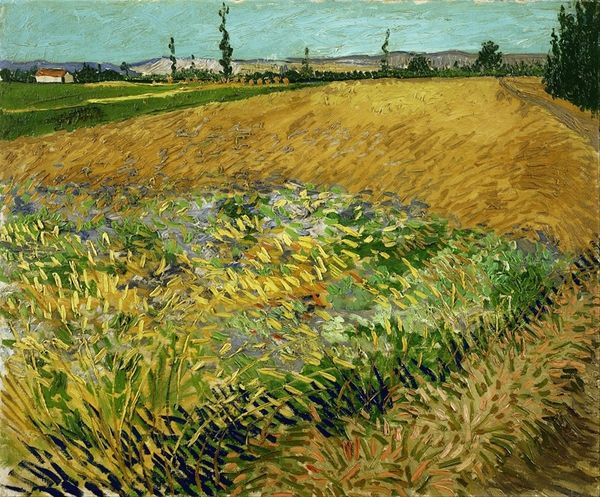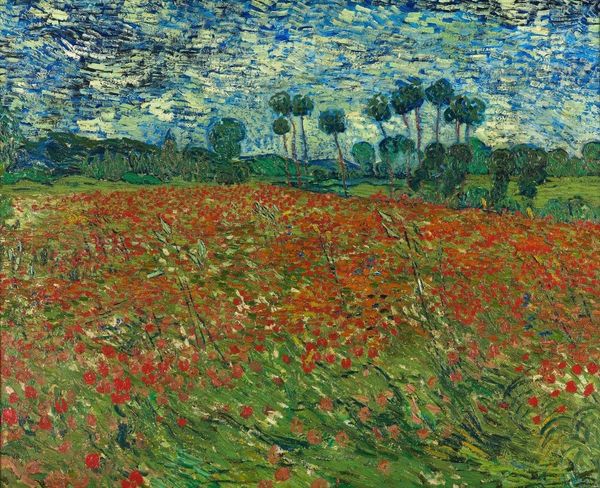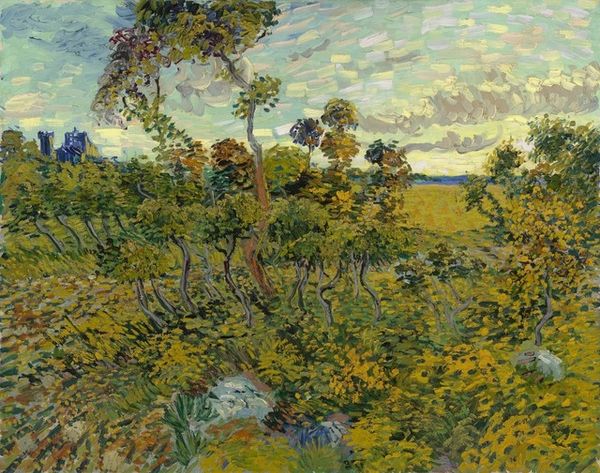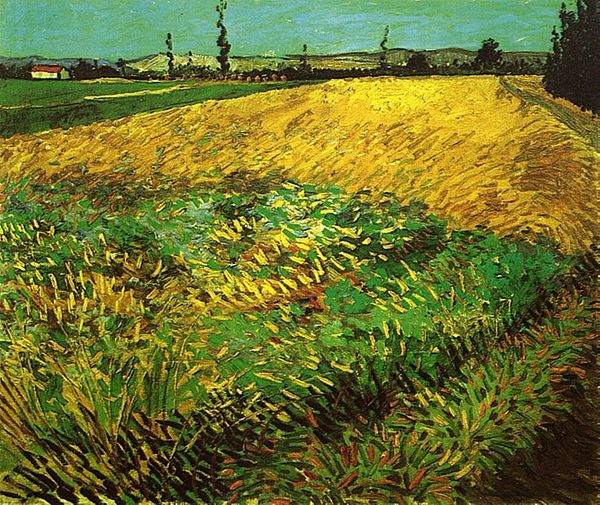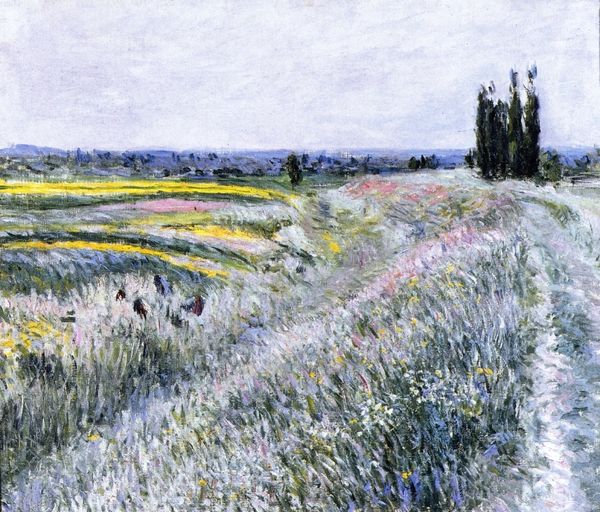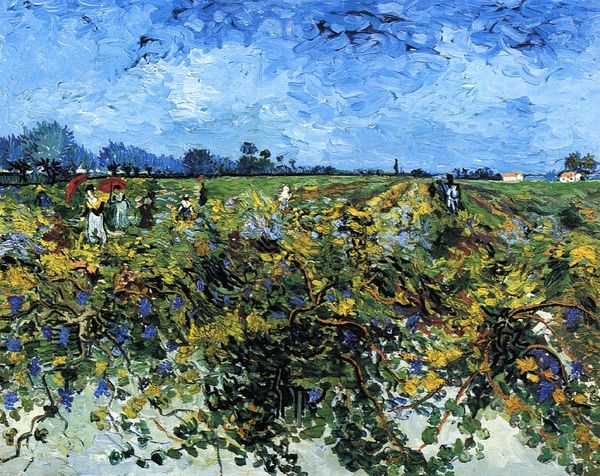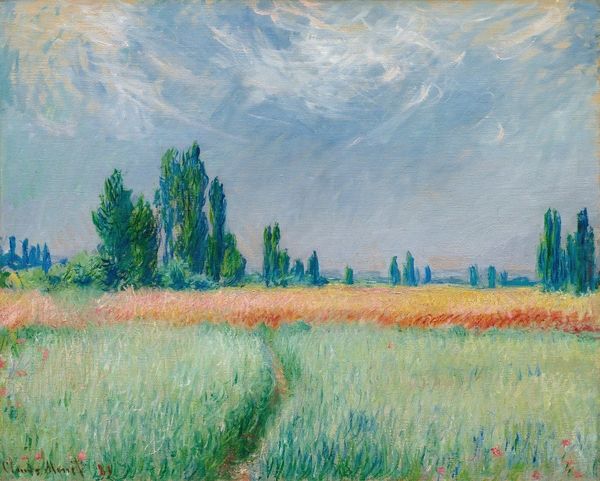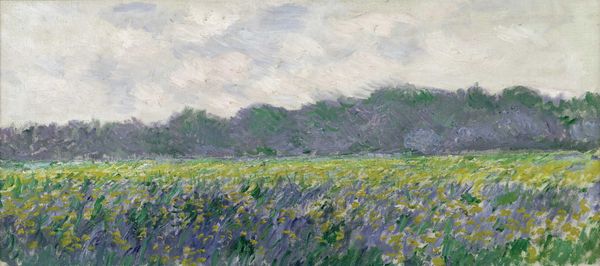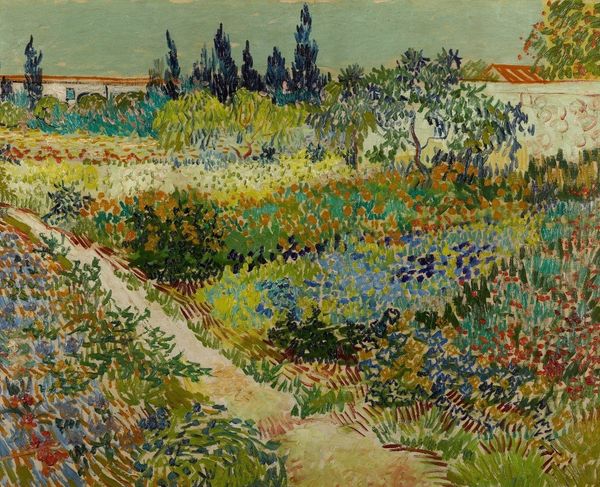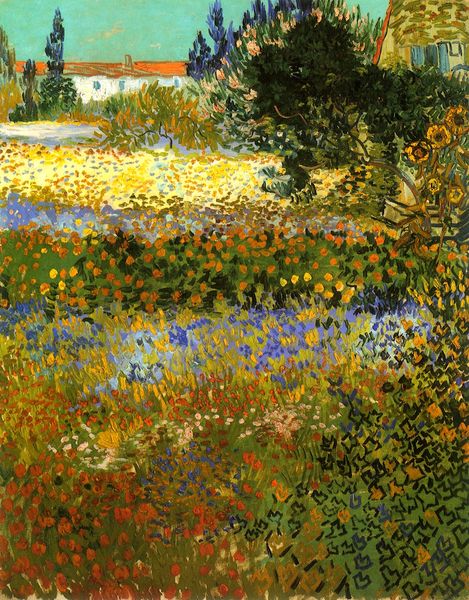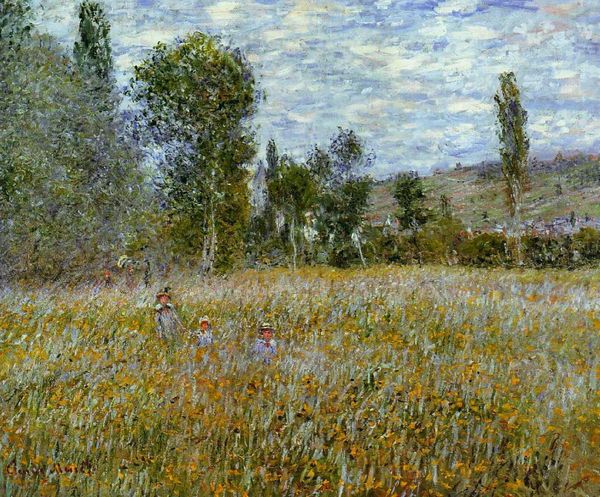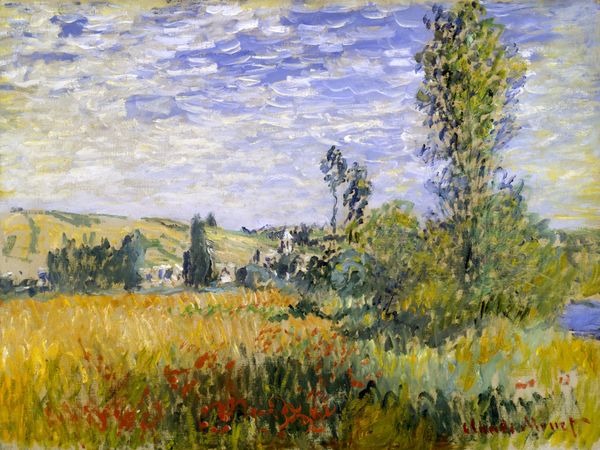
Copyright: Public Domain: Artvee
Editor: So, here we have Van Gogh's "Field with Flowers near Arles," created in 1888, using oil paints. It's such a vibrant and textured landscape! The thick impasto really makes the field come alive. What stands out to you when you look at this painting? Curator: What immediately grabs me is how Van Gogh uses this seemingly idyllic landscape to engage with broader socio-political issues. Consider Arles, at the time, a region deeply entrenched in agricultural labor, and think about the role of the artist within this working class context. Do you see this painting simply as a beautiful vista, or something more complex? Editor: I guess I was initially drawn to its aesthetic beauty. But, thinking about the agricultural context, the sheer abundance of the field and the town nestled in the background does suggest something beyond just prettiness... Curator: Exactly. Van Gogh often depicted scenes of everyday life, particularly the lives of laborers and the working class. How do you think this "abundance," as you called it, plays into a reading of labor and land ownership at that time? Who benefits from this beautiful landscape? Editor: Well, I suppose that tension between the idealized image and the realities of agricultural life is precisely the point. He is critiquing social norms while simultaneously creating a beautiful painting, maybe? Curator: Precisely! This painting, on one hand, captures a romanticized view of rural France, but on the other, hints at the complex relationship between labor, land, and the emerging industrial society. The vibrant colours contrast with the harsher realities faced by the agricultural workers who toiled in those fields. The iris in the front feels almost like an artificial or aesthetic add-on. Editor: That’s fascinating. I had never considered the painting in light of those socio-political issues. I guess I always thought of Van Gogh as…isolated. Curator: And it’s through understanding that seeming "isolation," placing his work within its historical moment, that we truly unlock its meaning. Editor: Thanks so much; this makes me see so much more than just a field of flowers. Curator: And hopefully prompts us to think about whose stories often go unpainted in these "landscapes."
Comments
No comments
Be the first to comment and join the conversation on the ultimate creative platform.
